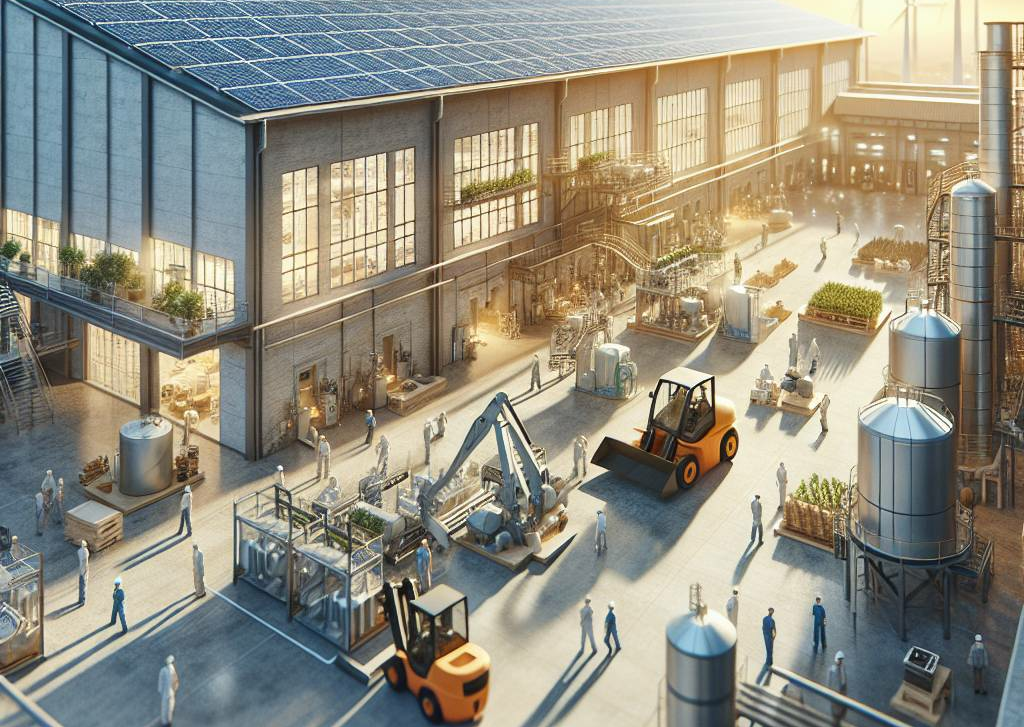In today’s industrial landscape, maximizing energy efficiency is not just a matter of reducing costs, but also a critical component of sustainable business practices. Industrial facilities, with their high energy demands, present numerous opportunities for improving efficiency, reducing carbon footprints, and enhancing overall operational performance. This article explores various strategies and technologies that can be implemented to maximize energy efficiency in industrial facilities.
The Importance of Energy Efficiency in Industry
Energy efficiency in industrial facilities is crucial for several reasons:
Cost Reduction: Energy is a significant operational expense for industrial facilities. Reducing energy consumption can lead to substantial cost savings, improving the bottom line.
Environmental Impact: Lowering energy usage reduces greenhouse gas emissions and environmental impact, contributing to corporate sustainability goals.
Regulatory Compliance: Many regions have regulations and incentives aimed at reducing energy consumption and emissions. Efficient energy use helps facilities comply with these regulations and benefit from incentives.
Enhanced Reliability: Efficient energy management can improve the reliability of equipment and processes, reducing downtime and maintenance costs.
Key Strategies for Maximizing Energy Efficiency
1. Energy Audits and Assessments
The first step in maximizing energy efficiency is to conduct comprehensive energy audits and assessments. These evaluations help identify areas where energy is being wasted and highlight opportunities for improvement. Energy audits typically involve:
Analyzing Energy Usage: Understanding how and where energy is being consumed within the facility.
Identifying Inefficiencies: Pinpointing processes, equipment, or systems that are inefficient or outdated.
Recommending Improvements: Providing actionable recommendations to enhance energy efficiency, such as upgrading equipment or optimizing processes.
2. Upgrading to Energy-Efficient Equipment
One of the most effective ways to improve energy efficiency is to upgrade to energy-efficient equipment. This can include:
High-Efficiency Motors and Drives: Replacing old, inefficient motors with high-efficiency models can significantly reduce energy consumption. Variable frequency drives (VFDs) can further enhance efficiency by adjusting motor speed to match the load requirements.
Efficient Lighting Systems: Transitioning to LED lighting and incorporating smart lighting controls can drastically reduce energy use in industrial lighting.
Advanced HVAC Systems: Upgrading to modern HVAC systems with energy-efficient components and controls can optimize heating, ventilation, and air conditioning performance, reducing energy consumption.
3. Implementing Energy Management Systems (EMS)
Energy management systems are integral to optimizing energy use in industrial facilities. These systems provide real-time monitoring, control, and analysis of energy consumption. Key features of an EMS include:
Real-Time Monitoring: Continuous monitoring of energy use across the facility to identify trends and anomalies.
Automated Controls: Automated adjustments to energy use based on real-time data, such as reducing HVAC usage during off-peak hours.
Data Analytics: Advanced analytics to identify patterns, predict future energy needs, and recommend efficiency improvements.
4. Process Optimization
Optimizing industrial processes can lead to significant energy savings. This involves:
Lean Manufacturing Techniques: Implementing lean principles to eliminate waste, improve process efficiency, and reduce energy consumption.
Automation and Control Systems: Utilizing automation and advanced control systems to optimize processes, ensuring they operate at peak efficiency with minimal energy waste.
Heat Recovery: Implementing systems to recover and reuse waste heat from industrial processes, reducing the need for additional energy input.
5. Renewable Energy Integration
Integrating renewable energy sources can further enhance energy efficiency and sustainability. Options include:
Solar Power: Installing solar panels to generate electricity on-site, reducing reliance on grid power.
Wind Energy: Utilizing wind turbines to harness wind energy for electricity generation.
Combined Heat and Power (CHP): Implementing CHP systems that generate electricity and useful heat simultaneously, improving overall energy efficiency.
Innovative Technologies for Energy Efficiency
1. Internet of Things (IoT)
The Internet of Things (IoT) enables interconnected devices to communicate and share data, facilitating advanced energy management. IoT applications in industrial energy efficiency include:
Smart Sensors: Deploying sensors to monitor equipment performance and energy use in real-time.
Predictive Maintenance: Using IoT data to predict equipment failures and schedule maintenance proactively, avoiding energy waste from malfunctioning equipment.
Energy Usage Optimization: Analyzing IoT data to optimize energy consumption patterns and identify areas for improvement.
2. Advanced Metering Infrastructure (AMI)
Advanced metering infrastructure provides detailed insights into energy consumption through smart meters. Benefits of AMI include:
Granular Data Collection: Collecting detailed energy use data at frequent intervals.
Improved Load Management: Enabling better management of energy loads and peak demand.
Enhanced Reporting: Providing detailed reports and analytics to guide energy efficiency initiatives.
Case Study: Energy Efficiency in Action
Consider an industrial facility that successfully implemented energy efficiency measures. The facility conducted an energy audit that revealed significant energy waste in its HVAC system and outdated lighting. By upgrading to a high-efficiency HVAC system with smart controls and replacing traditional lighting with LED fixtures, the facility achieved a 20% reduction in energy consumption. Additionally, the installation of an energy management system provided real-time insights and automated controls, further optimizing energy use and resulting in additional savings.
The Role of the Load Center
In the context of optimizing energy distribution, it’s essential to understand the function of a load center. A load center, commonly known as a breaker box or electrical panel, is the central point where the electrical power enters the building and is distributed to various circuits. Ensuring that the load center is properly maintained and upgraded is crucial for efficient energy management. Modern load centers can be equipped with advanced monitoring and control features that contribute to overall energy efficiency by providing detailed insights into energy distribution and usage patterns.
Future Trends in Industrial Energy Efficiency
Looking ahead, several trends are poised to shape the future of energy efficiency in industrial facilities:
Artificial Intelligence (AI): AI will play a significant role in predictive analytics, optimizing energy use, and automating processes to enhance efficiency.
Blockchain Technology: Blockchain can provide secure, transparent tracking of energy transactions, facilitating energy trading and efficient management of renewable energy sources.
Energy Storage Solutions: Advances in energy storage technologies, such as batteries and supercapacitors, will enable better management of energy resources and integration of renewables.
Conclusion
Maximizing energy efficiency in industrial facilities is a multifaceted challenge that requires a combination of strategies, technologies, and continuous improvement. From conducting energy audits and upgrading equipment to implementing advanced energy management systems and integrating renewable energy sources, industrial facilities have numerous opportunities to enhance efficiency and sustainability. By staying informed about the latest innovations and trends, industrial operators can make informed decisions that lead to significant energy savings, reduced environmental impact, and improved operational performance. As technology continues to advance, the potential for further efficiency gains and cost reductions in industrial energy use will only increase, paving the way for a more sustainable future.






